The importance of instilling the concept of...
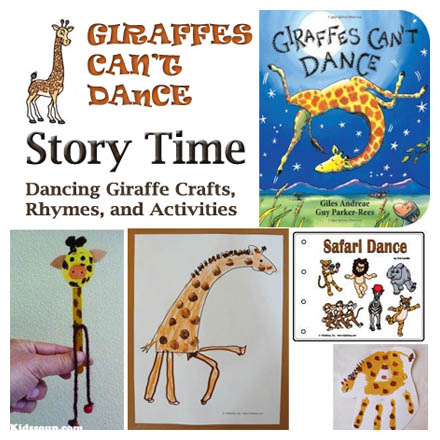
This story about Gerald—a friendly, yet clumsy giraffe—is told in rhythmic, rhyming text that keeps its own beat as it is read aloud. After Gerald is humiliated at the Jungle Dance, he meets a wise, violin-playing cricket who teaches him to discover his own unique and wonderful moves. Children will cheer along with the other animals when Gerald dances triumphantly at the end, twisting his legs around in a backwards somersault. The light and humorous illustrations maintain a sense of optimism throughout the story, even when Gerald is most discouraged. Gerald is a great example of finding one’s own way to do what feels impossible. As you read this story aloud, engage children by asking questions and defining difficult vocabulary before, during, and after reading. Here, we share a few ideas.
Book: Giraffes Can't Dance
Kindergarten Common Core Standards
Literature: Key Ideas and Details
RL.K.1 With prompting and support, ask and answer questions about key details in a text
Literature: Range of Reading and Level of Text Complexity
RL.K.10 Actively engage in group reading activities with purpose and understanding
Ask children, “Who can guess which zoo animal is the tallest?” “Who knows where giraffes live?" Place a giraffe picture on Africa on a map or on a globe.
The Giraffe
Author Unknown
Of all the animals in the zoo,
I am the tallest. That is true.
Who am I? I am the giraffe.
I am brown and white with a little red,
And I have two knobs on the top of my head.
Who am I? I am a giraffe.
My neck is long, I am very tall,
But I don't have very much voice at all.
Who am I? I am a giraffe.
I have one big ear on each side of my head.
High up in the air is where I am fed.
Who am I? I am a giraffe.
I walk right up to the tallest tree.
And I eat the leaves that are good for me.
Who am I? I am a giraffe.Display the book cover and read the title, pointing to each word. Lead a brief discussion that allows children to make some preliminary predictions about what will happen in the story. Try to draw children’s attention to the mismatch of title and illustration. The words say one thing, but the picture says another. Ask:
During Reading:
As you read, define difficult vocabulary words as they come up (see the list below for child-friendly definitions of dance-related verbs that appear in the text). Stop briefly to ask questions about some of the illustrations. For example, for the illustration on pages 5-6, you might ask:
Dance-Related Verbs: Child-Friendly Definitions
After Reading:
Have children compare their original predictions with the actual outcome in the story. Talk about what happens to Gerald in the story. Encourage children to draw conclusions by asking the following questions:
Ask children to think about things that they can do that they once thought they couldn’t do. Then, let children stand and shake out there sitting and listening muscles with the following movement activity or fingerplay.
Review the verbs used to name dance moves and movements in the story. Have volunteers demonstrate some of the simpler moves (cha-cha, skip, prance, twirl, sway, shuffle etc.) and write each word on an index card. Then, have children spread out in the room. Hold up one index card at a time and call out the word. Let children practice the movement. Continue until each dance-related verb has been called out.
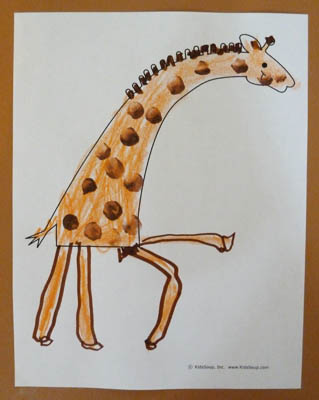
Print free giraffe printable and let children draw dancing legs to the giraffe. Then color the giraffe and add brown fingerprints for the giraffe's spots.
Make a handprint giraffe.
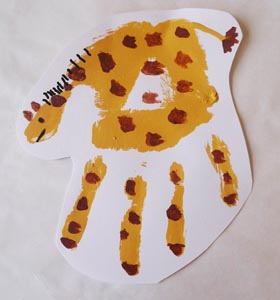
Dancing Giraffe Puppet Craft (Craft directions available inside our KidsSoup member site)
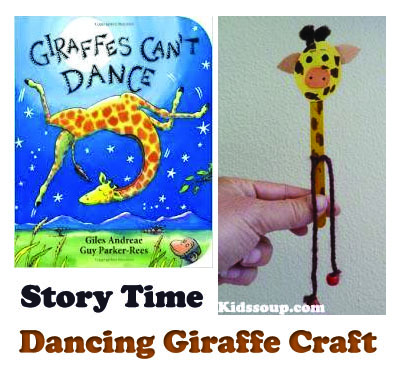
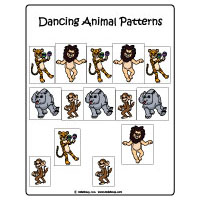 Preschool Activities: |
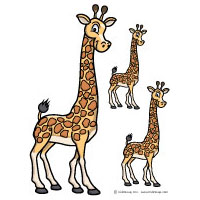 Preschool Activities: |
| Dancing Animal Patterns | The Giraffe Is Tall Fingerplay and Sequencing |
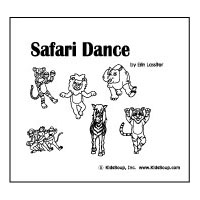 Preschool Activities: |
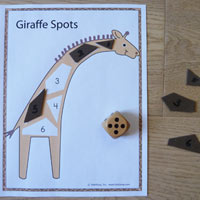 Preschool Activities: |
| Safari Dance Booklet b/w | Giraffe Spots Number Shapes Identification Game |
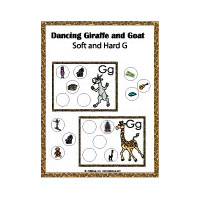 Preschool Activities: |
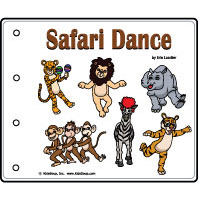 Preschool Activities: |
| Dancing Giraffe (soft G) and Goat (hard G) |
Safari Dance Emergent Reader
|
KidsSoup Resource Library